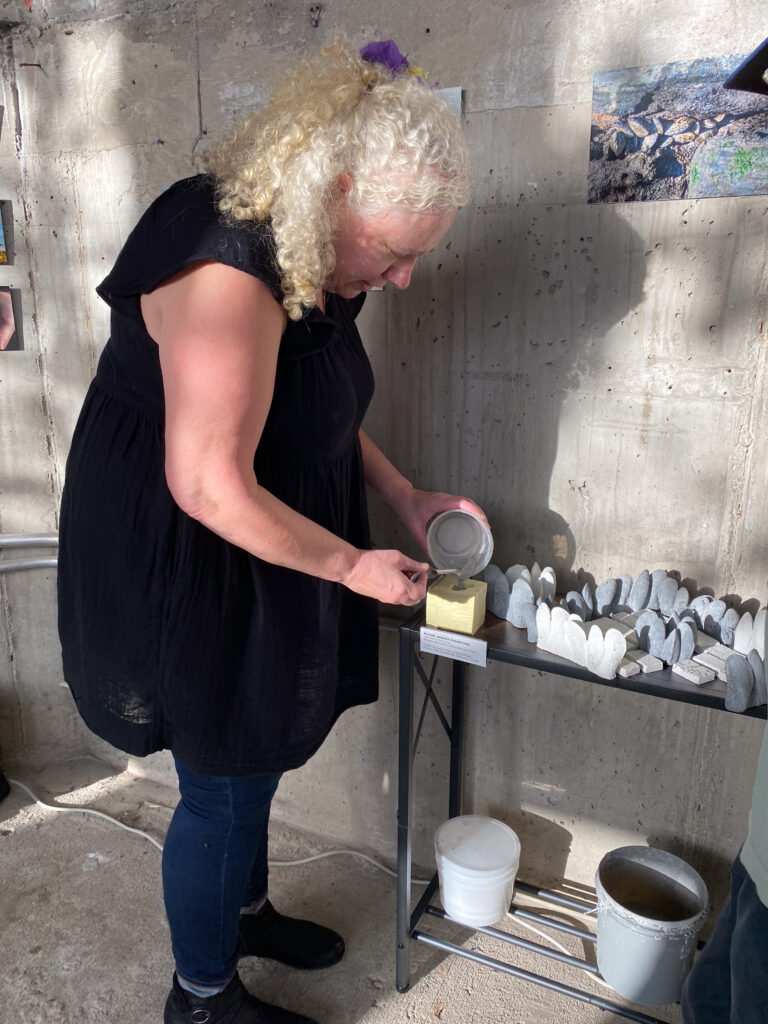Mighty Mussels
Here at the Gowanus Dredgers, we LOVE mussels! While oysters often steal the spotlight as filterers and indicators of clean water in New York Harbor, Atlantic ribbed mussels have been quietly toiling away in far more polluted water than the oysters can even tolerate, doing the hard work of filtering in some of the most hazardous waters, like the Gowanus Canal. We’re proud to be collaborating as a program co-lead with the Gowanus Canal Conservancy with Brooklyn Collaborative Studies to work with local students researching, creating and monitoring constructed habitats to encourage mussel growth along the bulkheads of the canal.
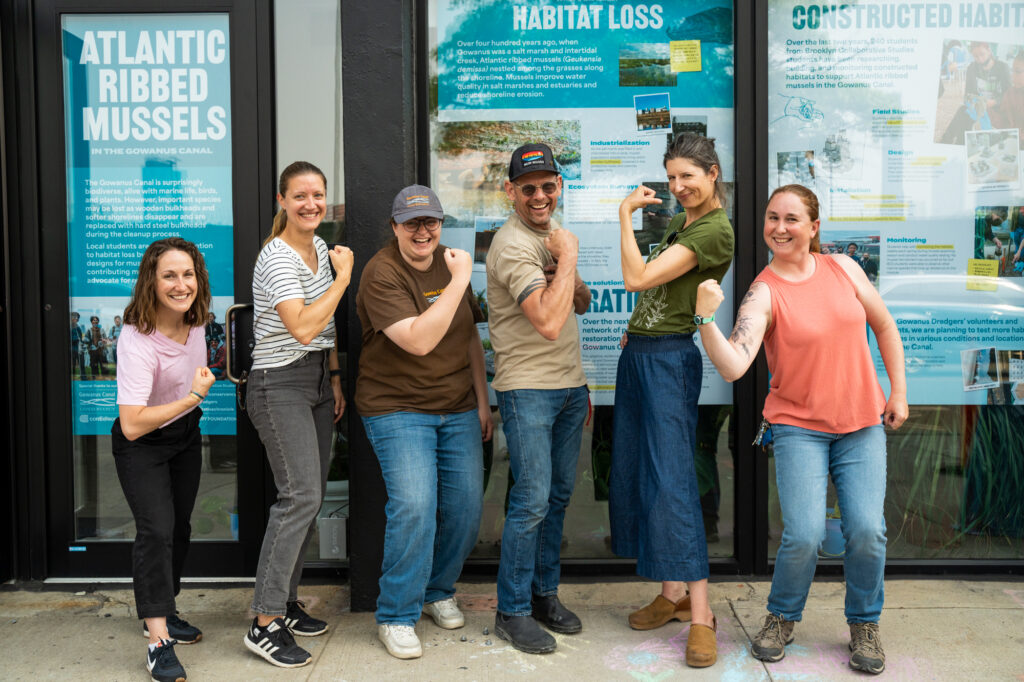
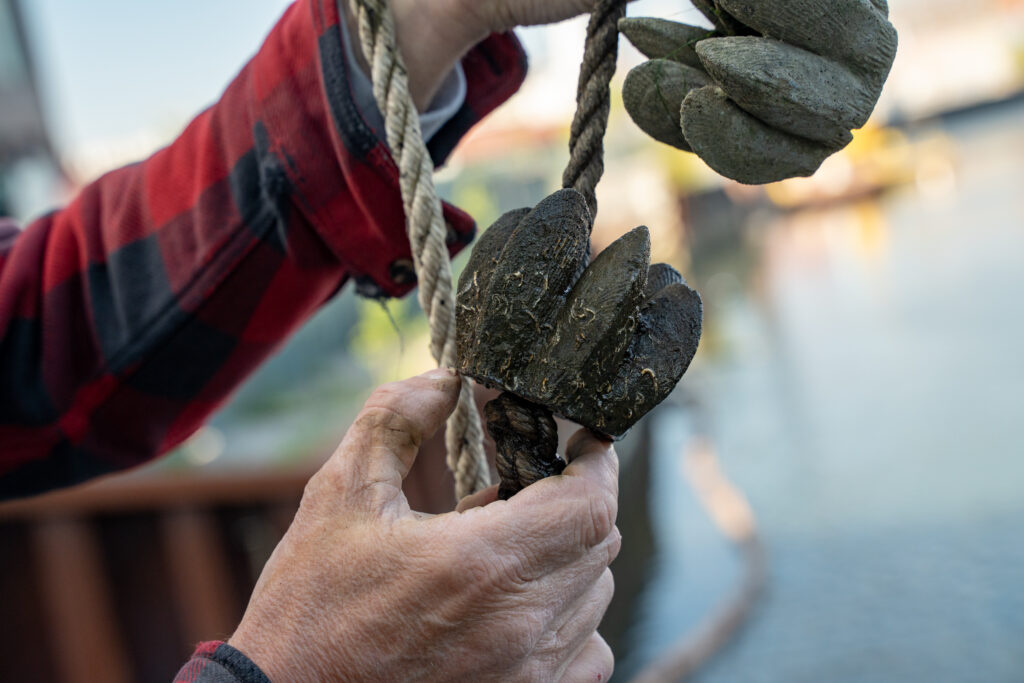
FUN MUSSEL FACTS!
- The mussel is eurythermal, which means they can survive in extreme water temperatures from -7.6 to 104 degrees F*
- Mussels can tolerate a wide range of salinities, from near fresh water up to 70 ppt (twice the concentration of seawater)*
- Ribbed mussels can filter 6.8 liters of estuarine water an hour*
- Mussels are one of the few bivalves able to forage on small-sized bacterioplankton and are able to efficiently remove a wider-range of sizes of particulate organic material then many bivalves*
Check out this video showing the awesome filtration power of the mighty mussel!
Mussels at risk
Ecosystem surveys done by the Gowanus Dredgers and collaborating partners over the last few years have revealed over 1,110 distinct species of plants and animals living in and along the Gowanus Canal, including significant Atlantic ribbed mussel populations in the wooden bulkheads. (See the bottom of this page for some data on the surveys.) Mussels improve water quality in salt marshes and estuaries and reduce shoreline erosion.
As part of the Superfund cleanup, older wooden bulkheads where mussels now live are being replaced with steel. While steel bulkheads will stabilize the shoreline, they do not provide ideal habitat for mussels – in fact, the surveys showed that wood supports 103 times more mussels than steel!
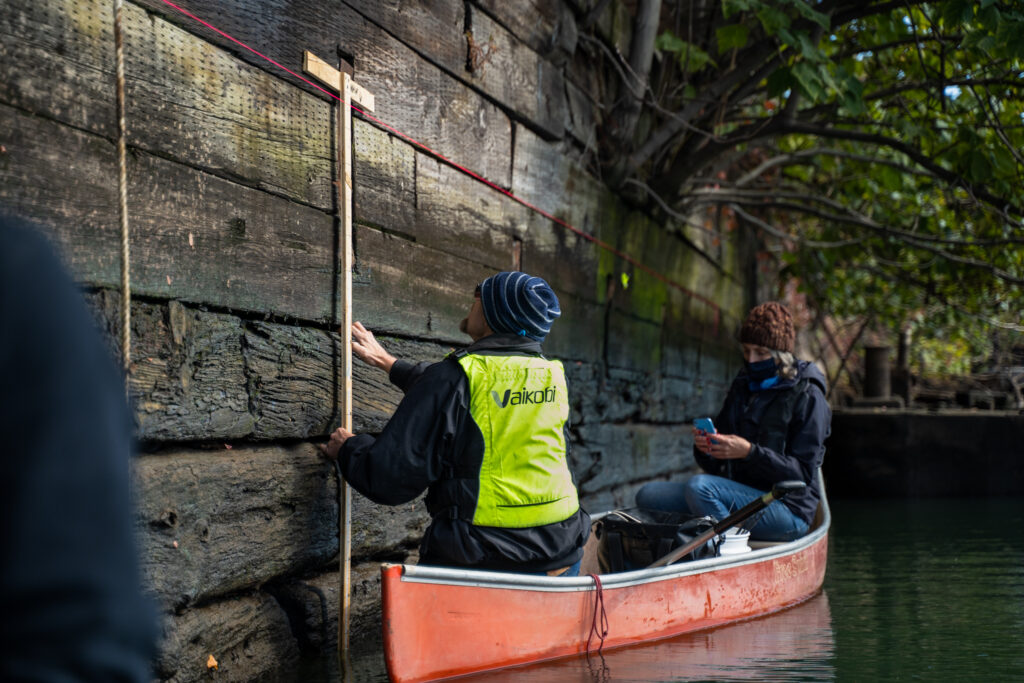
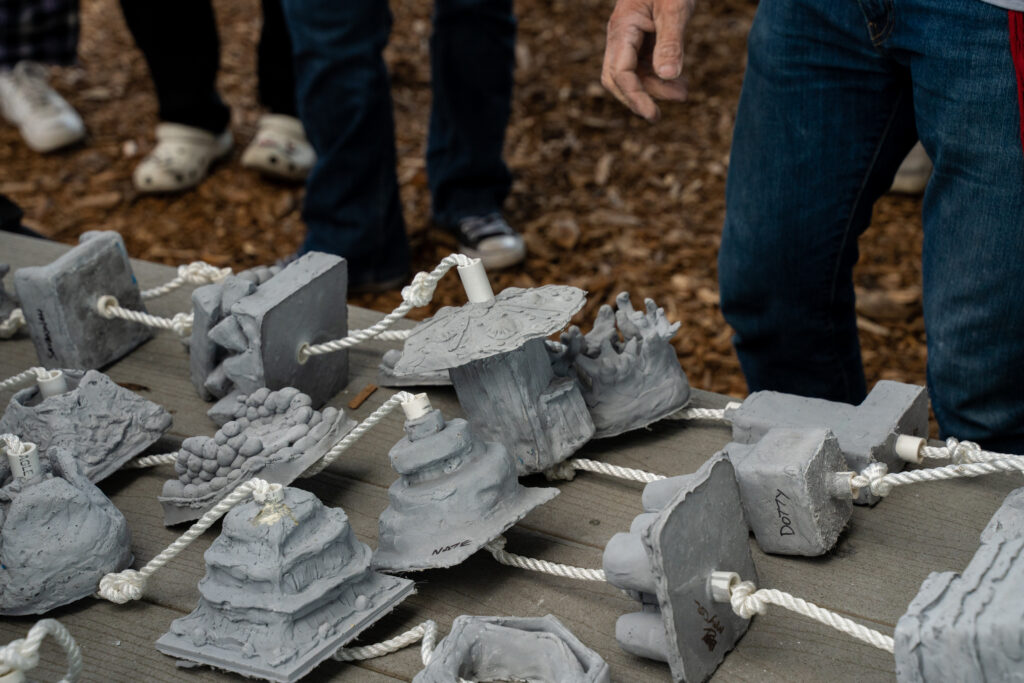
Student designs and monitoring
Over the last two years, 240 high school students from Brooklyn Collaborative Studies have been researching, building, and monitoring constructed habitats along steel bulkheads to support Atlantic ribbed mussels in the Gowanus Canal.
Students visited the Canal to learn about mussels’ habitat needs, then modeled their own designs back in the classroom. Some designs were fabricated in High Performance Concrete by the Gowanus Dredgers, then suspended from a steel bulkhead, near the 9th St bridge at the Lowlands Nursery. Students have monitored the habitats weekly each spring during mussel spawning season.
No mussel recruitment has occurred so far, but students observed other marine species that took up residence, including bristle worms, barnacles, blue crabs, grass shrimp, amphipods, and mummichog!
KEY TAKEAWAYS FROM OUR MUSSEL SURVEYS
- Wooden bulkheads provide significan habitat for mussels (311 mussels/ 100LF)
- Wood supports 103X more mussels than steel
- Total mussels counted along the bulkhead: 4,129
- Total mussels counted along the rip-rap shoreline: 1,768 (Population estimate 362,700)
We are continuing to work with the Gowanus Canal Conservancy and BCS to inform community members about Atlantic ribbed mussel restoration, and learn more from other mussel habitat research to help inform a longer term vision for restoration along the Canal.
Funding for this program is provided by the Richard Lounsbery Foundation and Con Edison.
While this program is aimed at students, keep an eye out at our walk-up paddles and other events for a chance to try your hand at making your own mussel to take home! If our ongoing mussel monitoring is something that you’d like to be involved with, drop us a line.
